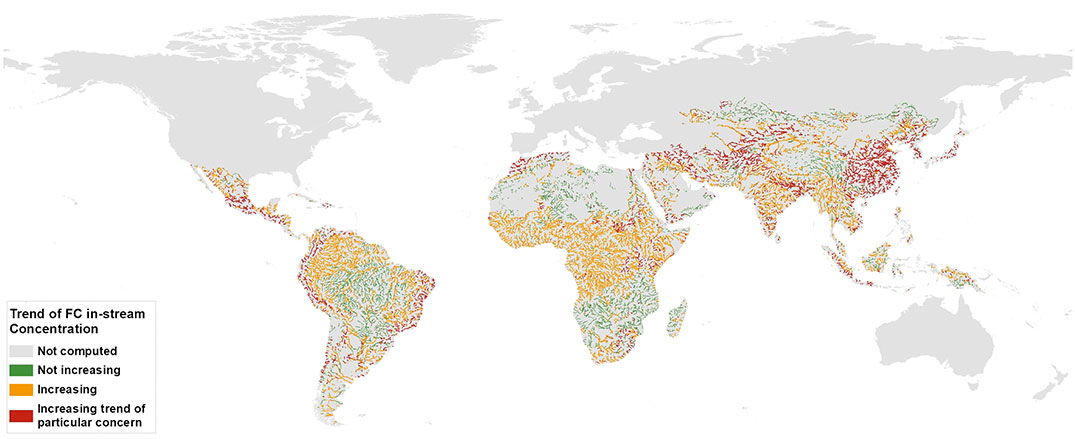Water-borne diseases remain major challenges in many African, Asian, Pacific and Latin American cities and rural communities (Annex 9-1). Although collection and treatment of human excrement has largely curtailed the problem in developed countries, sewage outfalls still generate large pathogen loads. However, parasites can survive waterbody conditions for many weeks, while viruses may survive drinking water treatment.
Pathogens remain a major cause of human death and illness, particularly in developing countries (http://www.who.int/water_sanitation_health/takingcharge.html). High child mortality, for example, is associated with diarrheal diseases from contaminated water in Africa, Asia, the Pacific and Latin America (Annex 9-1). Principal pathogen sources include inadequately treated human and livestock wastes, and combined sewer overflows and leaks. (Figure 9.10)

Irrigation with inadequately treated or diluted wastewater occurs in many developing countries, increasing agricultural productivity for many poor communities, but often at the expense of human health and environmental risks. Comparison studies highlight environmental degradation and higher waterborne disease rates in wastewater-irrigated areas (75 per cent prevalence rate for gastroenteritis in children 8-12 years of age, compared with 13 per cent in freshwater-irrigated areas) (Grangier, Qadir and Singh 2012).
Antibiotic and antimicrobial resistance is a major global health concern, with the spread of resistant bacteria and resistance genes in the environment being a critical component of integrated control efforts (Berendonk et al. 2015). The major source remains human and animal excreta, with aquaculture increasingly adding to the levels in the water environment (Kümmerer 2009). The World Health Organization (WHO) predicts antimicrobial resistance to become a major cause of deaths globally by 2050 (Annex 9-1). Wastewater-treatment plants have diverse abilities to remove antibiotic-resistant bacteria, and limited capacity to remove antibiotic drugs (Pruden et al. 2013; Berendonk et al. 2015).